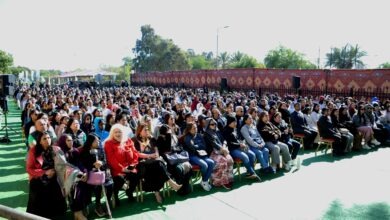
Secondhand clothing has come out of the closet, with the sector on-track to account for 10% of the global fashion market in 2024.
The negative associations around buying used garments are gone, as sustainability, cost concerns and the boom in online shopping make embracing ‘pre-loved’ clothing something to shout about.
Global pre-owned clothing sales reached $211 billion in 2023, a 19% increase on the previous year, with a report by GlobalData for secondhand clothing resale site ThredUp predicting the market could reach $350bn by 2027. Worldwide secondhand sales are expected to increase three-times faster on average than the overall apparel market by 2027, the report predicts.
Bad news for fast fashion? Maybe, but better news for the planet.
Estimates of the fashion industry’s greenhouse gas footprint range from, at the higher end, a 2019 World Bank analysis of 10% of global emissions, to 1.8% according to a 2023 report by the Apparel Impact Institute.
Here are four innovations from World Economic Forum UpLink innovators, which aim to promote the circular economy and help make the fast-fashion industry more sustainable.
Planting leather and textiles
A US-based start-up called Natural Fiber Welding turns plant-based materials into sustainable ‘leather’ and textiles.
The firm’s products meld plant matter into fibres that behave like synthetics, including a plant-based leather called MIRUM that contains no PVC or synthetic binding agents.
MIRUM is created using a natural process that doesn’t use harmful chemicals, unlike natural leather, and is not a pollutant, unlike ‘pleather’ or plastic leather, so it biodegrades back into natural ingredients.
Identifying clothing’s circular economy
Eon Group has developed a way to give items of clothing a digital ID known as CircularID, which promotes the circular economy to help make fashion more sustainable.
This digital passport enables brands to sell and resell their garments any number of times, as each item can be tracked and traced over its entire lifecycle, from production, sale, resale to recycling.
The ID holds essential information, such as fabric makeup, which can help recyclers process the garment at the end of its life.
Reducing excess inventory
Waging a war on garment waste, Queen of Raw provides an e-commerce software solution that enables enterprises in the fashion industry to quickly set up and manage their excess inventory.
The company’s Materia MX Software as a Service (SaaS) supply chain solution automates buying, selling, reuse and recycling of excess stock, which boosts inventory efficiency, saves money and utilizes would-be garment waste.
Up-cycling old fashion
Another innovator tackling the problem of global textile waste, German company Re-Fresh Global uses ‘Smart Textile Waste Upcycling Microfactories’ to transform old clothes into fragrances, pharmaceuticals, shoes, fabrics, vehicle upholstery and more.
Re-Fresh collects discarded textile waste at its factories, where machines sort it by colour and material type.
Using a patented biotechnology process, the waste is turned into three biodegradable raw materials: bio-ethanol, nanocellulose and an unwoven textile pulp. These low-cost, high-volume raw materials are used in the construction, automotive, textile and fashion sectors.
These are just a few of the innovators aiming to slow down fast fashion, increase circularity and make the clothes we wear more sustainable.












